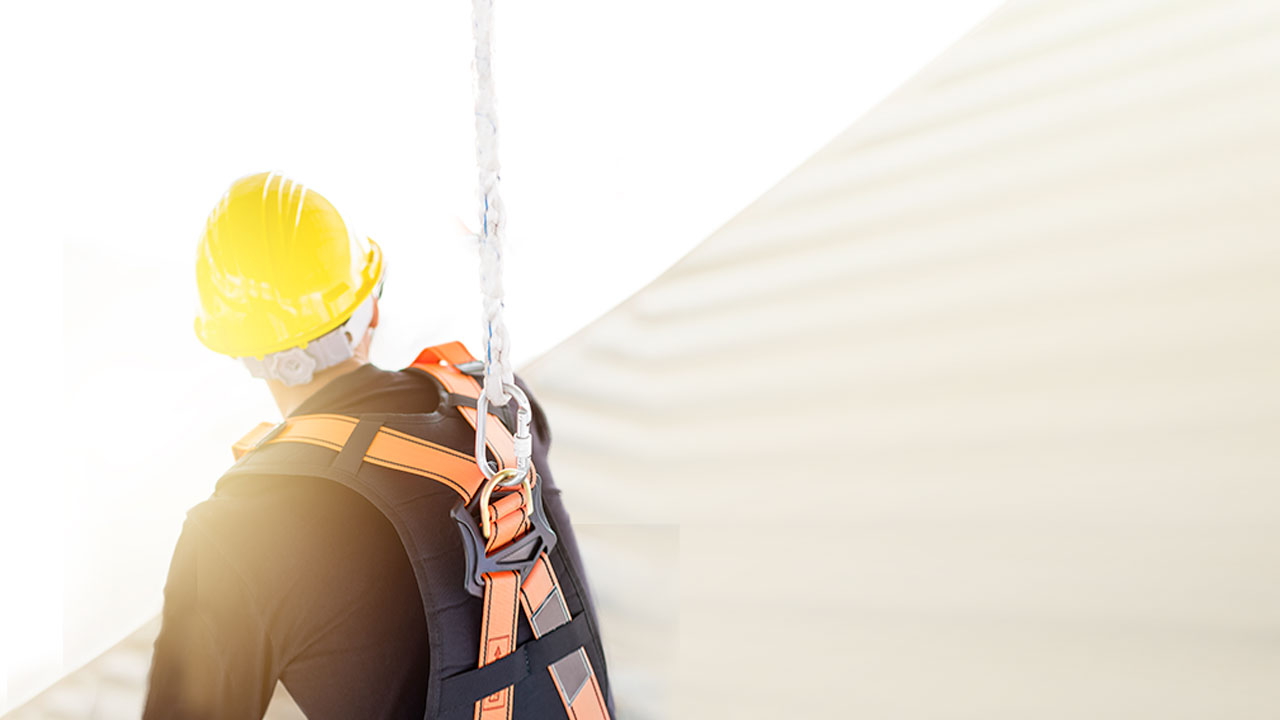If you’re not paying attention to the way people access your roof, you might find that problems with your rooftop safety culture can develop quickly. Left unchecked, people could start to use your roof as an informal meeting site or a place to take lunch breaks or cigarette breaks. Unbeknownst to the people casually using your roof, however, these individuals are putting both the roof and themselves in danger.
The fact of the matter is that roof access should be limited to the smallest number of people you can afford. Although providing roof access is necessary, only trained maintenance and repair workers should be allowed on top of the roof, and they should only be allowed up a few times per year. Make sure both your roof and your maintenance and repair workers are safe with a strategic plan and reliable rooftop support systems.
What Are the Safety Risks from Foot Traffic?
Uncontrolled foot traffic has the potential to severely damage a roof. Here are a few things that may occur.
- Crushed Insulation
Over time, the weight of foot traffic will crush and compact insulation. This destroys the air pockets within the material, preventing it from retaining hot or cold air and making climate control more expensive.
- Torn Membranes
Foot traffic can easily damage delicate roof membranes. This introduces a pathway for leaks. In addition, a small penetration in the roof membrane can easily tear further under strong weather conditions such as high wind, leading to an expensive repair.
- Damaged Rooftop Equipment
If the people accessing your roof aren’t trained personnel (or even if they are), there’s a good chance they could damage pipes, cable runs, or HVAC equipment. If any of these systems break down, they could also damage the rooftop structures underneath.
Damage to the roof itself isn’t the only thing you have to worry about. Slips, trips, and falls on the rooftop environment—which is often wet with rain or slick with ice—have the potential to be very dangerous to workers. A good access plan mitigates the danger and allows workers to access the roof without damaging its components or injuring themselves.
Creating a Roof Access Plan
A roof access plan starts with the right equipment. All workers on the roof or above it should have fall protection equipment, which may include:
- Anchor points
- Lifelines
- Lanyards
- Harnesses
In other words, workers need equipment that will stop them from falling and catch them if they fall. In addition, workers should be fully trained to use this equipment. Workers who have not completed a safety course should not be allowed on the roof.
In addition, obstacles on the rooftop should be clearly marked and protected when necessary. Workers should be able to know where skylights, trip hazards, and electrical lines are located using spray paint or reflective tape. These areas should be protected when possible so that workers don’t trip over or fall through windows.
Lastly, you need to consider the climate. When performing maintenance during the winter—for rooftop snow removal, for instance—workers should always be reminded to wear weather-appropriate gear and be mindful of hazards related to low temperatures.
Once a rooftop safety culture is established, it should be maintained. Rooftop workers should receive training at fairly regular intervals so that their knowledge doesn’t degrade. Facility managers should also place signage at rooftop access points to remind workers about safe behavior, use of safety equipment, and any extraordinary hazards. Workers who fail to observe warnings or use appropriate safety gear should be sent back to training or barred from the roof.
Implement a System of Roof Access Walkways
Your most important investment when creating a culture of worker safety on your roof is to implement a system of roof access walkways. These are designed to elevate foot traffic off the surface of your roof and distribute the weight of workers and equipment by using ballasted, non-penetrating fasteners.
In addition to keeping workers out of direct contact with the roof surface, a system of roof access walkways can also keep workers our of harm’s reach. By providing railings near roof edges, ramps over pipes and electrical wires, and stairs to different levels of your roof, you protect your workers from slipping, falling, or coming into contact with dangerous equipment.
Here at PHP Systems/Design, we specialize in creating custom roof access walkways that protect both your workforce and your roof. Our galvanized steel structures are sturdy, safe, and resistant to wind and weather—and they attach to your roof without any penetrations or fasteners. It is possible to improve rooftop safety while mitigating any damage to your roof, and we help you do it!




